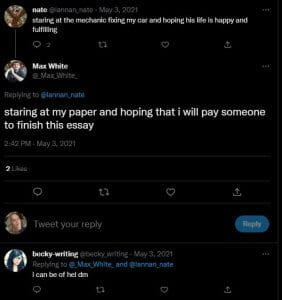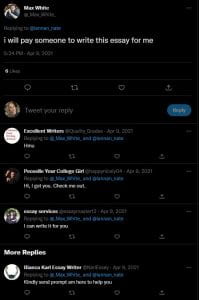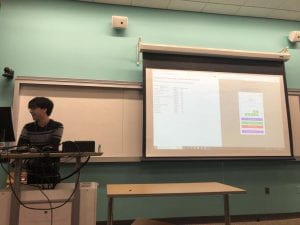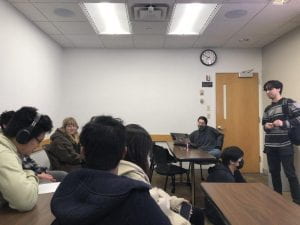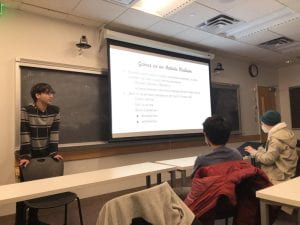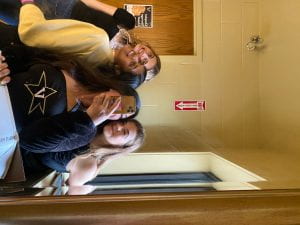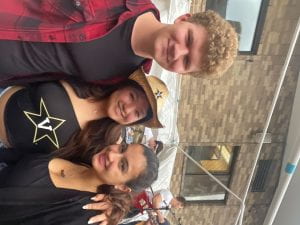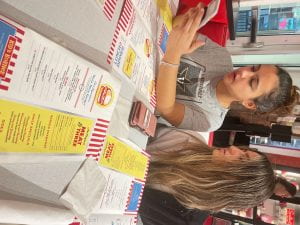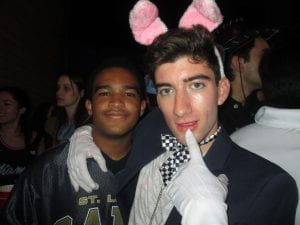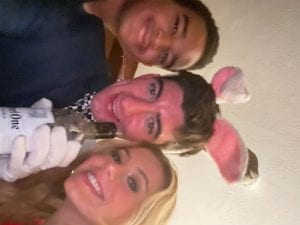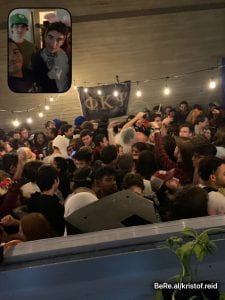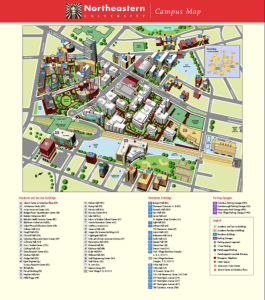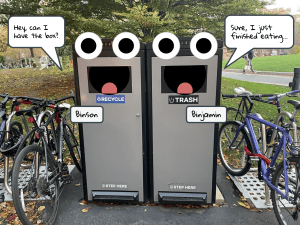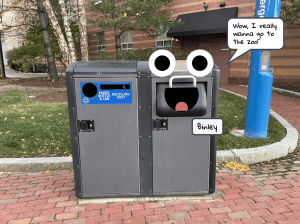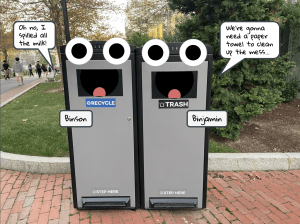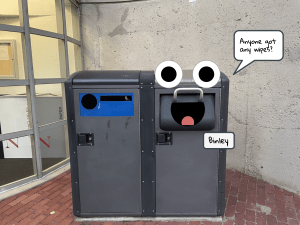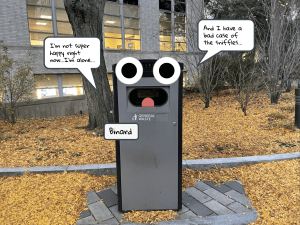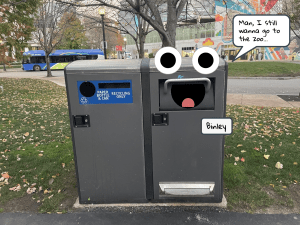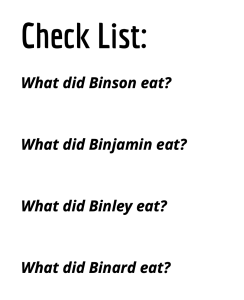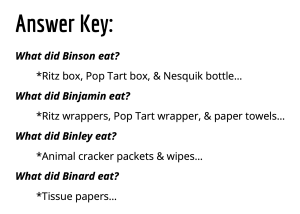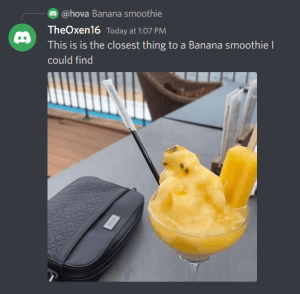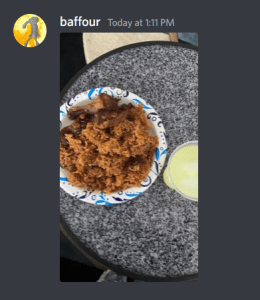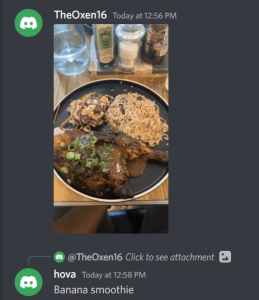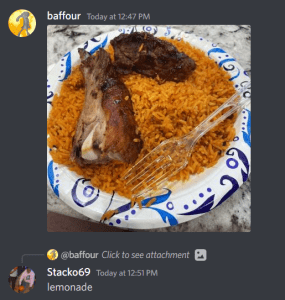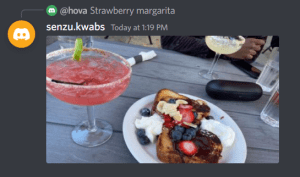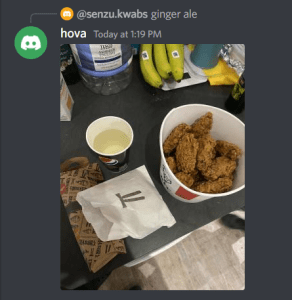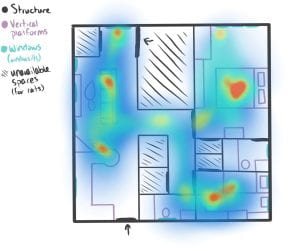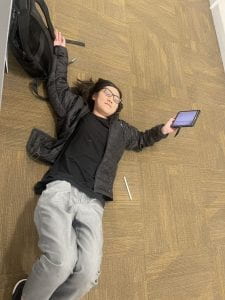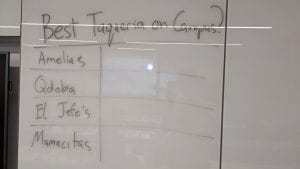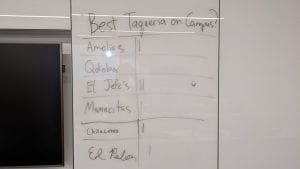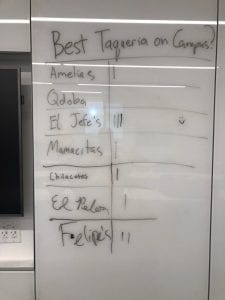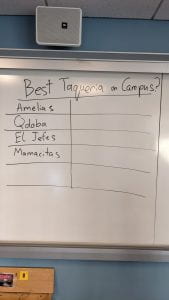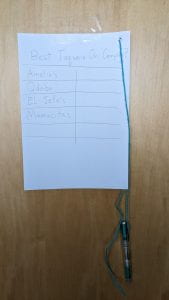Goal:
- Manipulate and weaponize existing bots to impede upon the experience of other Twitter users
- Demonstrate the prevalence and omniscience of bots on social media, in this case specifically Twitter
- Show the predatory behavior of “Essay Writing Services” and their ease of access
Procedure:
- Acquire the permission of the selected affected user
- Go to a recent tweet and reply with some variation of “I will pay someone to write this essay for me”
- View the almost instantaneous response by various bots
Artist’s Statement:
My initial inspiration came from the widespread activist practice of needing to slightly exacerbate a problem or nuisance in order for the proper authorities to notice it and fix it. Sometimes one must make an issue worse so that it either actually steps into the sight of an overseeing organization, or so that it creates enough justification for resources to be spend dealing with the issue. This practice can be seen in a multitude of ways and with varying levels of severity. It might be as simple as widening a pothole or crack in the sidewalk so that the city determines it to be enough of a hazard to merit repair. One man in England taped raw fish to broken ATMs so that banks were forced to service the ATMs when they came to remove the dead fish. It could also be the demonstration of backwards, outdated, nonsensical, or hypocritical laws. The practice of “sit-ins” during the Civil Rights Movement are a fantastic example of exacerbating what was perceived “as a nuisance” to demonstrate the illogicity and backwardness of excluding black customers from restaurants. While no where near as noble—or hard fought—as such a practice, my intention with this intervention was the demonstrate the prevalence and lurking nuisance of web-crawlers and bots on the internet. The selected environment, and specific issue to highlight, was the presence of bots on Twitter; More specifically reply bots offering a service, in this case “essay writing services.” These bots masquerade as authentic people, but are—for the most part—actually a highly networked service of web-crawlers auto replying to individuals lamenting the difficulties of their essay and then connecting users to a paid essay writing service. In this way, these bots act in a particularly malicious matter, as someone not even explicitly asking for such a service—possibly just posting to vent their essay related frustrations to their friends—could find themselves deluged with accounts offering their services at competitive rates. Thus to demonstrate this, I had a friend reply to various Twitter posts with some variation of “I will pay someone to write this essay for me.” Each time resulted in a multitude of bots replying to him, offering their services, and we even saw some other genuine users commenting how my friend had “summoned the bots” or saying something to the effect of “here they come.” This demonstrates that this issue of auto-replying bots is a widespread and known issue on Twitter, but rather than being cracked down upon, they are instead tolerated and ignored as their annoyance is only minor and temporary. Hopefully this intervention helped exacerbate this issue in some individuals’ eyes and compelled some to try and act to resolve this nuisance.
Documentation:
